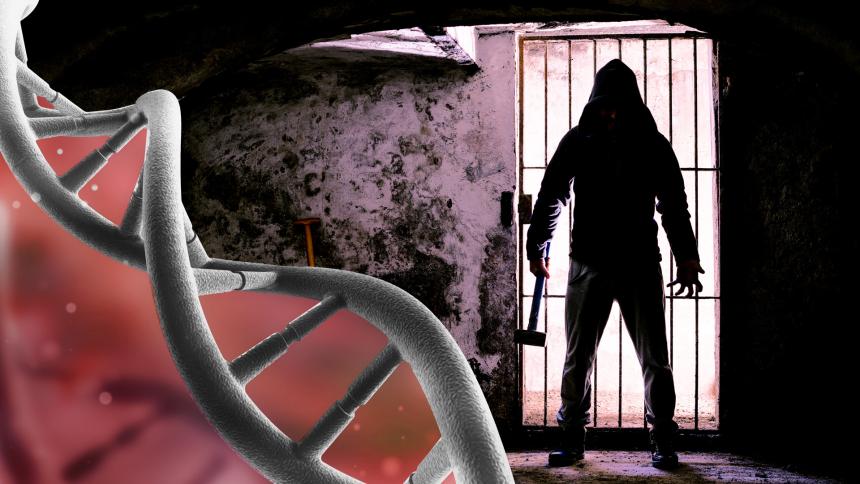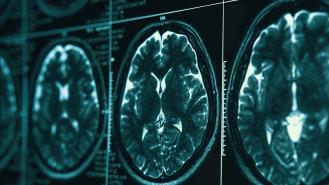
Does 'The Warrior Gene' prove that killers are born and not made?
Psychology and psychiatry have been some of the most successful, studied and encouraged sciences of the past century or so. Humans have always been fascinated by the mechanics and reasoning behind the psyches and actions of ourselves and others. And never before have we known so much about how or why people behave the way they do.
Let’s not get carried away with ourselves, though. Science is always just a collection of best guesses. Granted, it’s an agreed-upon collection and only the brightest minds around make those guesses, but science is still a fluid concept. Theories, notions and tenants are liable to change at any time with the introduction of new data.
Essentially we’re going to discuss the classic scientific idea of ‘Nature vs. Nurture’ in a criminal context here…
Serial killers kill for several reasons, none of them - of course - justify or validate their abominable actions. Yet all, society seems fairly certain, are environmental. They were chronically abused as children, they suffered brain damage, they’re dependent on alcohol or drugs, these are the most common given ‘reasons’. But what if there was something else at play?
What if there was a killer gene?
Well, there may well be one. That’s the considered and respected scientific opinion of a team of Finnish neuroscientists who believe that they have isolated a gene and a genetic deficiency that makes humans demonstrably more prone to acts of extreme violence. The names of these things? There’s the CDH13 gene, which - admittedly - isn’t a particularly catchy name outside of a lab. So it’s been given a slightly more memorable and headline-grabbing alias. One you’ll find in the headline of this very article: ‘The Warrior Gene’. Then there’s ‘Monoamine oxidase A’ or ‘MAOA’ (not to be confused with a similarly-named chewy sweet).
CDH13 and MAOA, as with all genetics, get pretty complex. It’s neuroscience, so we’ll try not to get too bogged down in the details, lest we all end up scratching our heads so much we end up touching our brains. Basically, it’s all about the regulation and breakdown of neurotransmitters such as serotonin, the main hormone we use to regulate mood and behaviour. People with defects in the MAOA genotype and/or have the CDH13 gene struggle to control their serotonin, which can result in a low dopamine turnover rate. That, in turn, has shown to result, very often, in poor behaviour control and outbursts of extreme violence.
Professor Jari Tiihonen works at the Department of Clinical Neuroscience in the Karolinska Institute, a research-led medical university in Stockholm. He’s been at the forefront of the research which discovered the gene. His results, published in the journal 'Molecular Psychiatry', sent shockwaves around the scientific community. Professor Tiihonen analysed the genes of almost 900 Finnish violent and repeat offender criminals. The results were fairly conclusive.
The Finnish report states the following: "Our results, from two independent cohorts of Finnish prisoners, revealed that a monoamine oxidase A (MAOA) low-activity genotype (contributing to low dopamine turnover rate), as well as the CDH13 gene (coding for neuronal membrane adhesion protein), are associated with extremely violent behaviour (at least 10 committed homicides, attempted homicides or batteries)."
"No substantial signal was observed for either MAOA or CDH13 among non-violent offenders, indicating that findings were specific for violent offending, and not largely attributable to substance abuse or antisocial personality disorder. At least about 5–10% of all severe violent crime in Finland is attributable to the aforementioned MAOA and CDH13 genotypes."
It’s simplistic to say ‘there is a killer gene, you either have it or you don’t’, but the research indicates that impulsive violence of an extreme kind is unusually common in those criminals with the MAOA gene. That’s not to say that every human being born with the ‘warrior gene’ will go on to kill or spend a lifetime resisting the urge to murder other people. They may find themselves battling anger management issues, but the gene itself is not enough to ‘make a killer’.
The idea of Nature vs. Nurture being a straight-up binary choice is - pretty much - a falsehood. At least in the context of how ‘evil’ is created. The reality is that it’s a little from Column A and a little from Column B. It seems very likely, from the research, that particularly unrelenting and sociopathic serial killers likely have a genetic predisposition for extreme violence. It’s latent until effectively set alight. A catalyst is needed. This is where childhood trauma/abuse, heavy drinking or drug abuse or brain damage comes in.
One of the most heavily repeated snippets about the infamous American serial killer Henry Lee Lucas is the extent of his childhood abuse and how it contributed to his state of mind as an adult. While it’s not held up as an ‘excuse’ for his crimes, it’s often mentioned. What this research indicates is that trauma was only a factor. It may have been a stimulant, but without the so-called warrior gene, he may very well have just been a traumatised man with issues, but no track record of violent slaughter.
It’s important to make the point. Dreadful childhoods do not make serial killers. Just as the CDH13 gene or MAOA genotype don’t. Mix them together and it may very well lead to a perfect storm of extreme, murderous violence.
So what are we to conclude from all this? Well, it depends on how much weight we want to place on Professor Tiihonen’s research. It’s never a great idea to draw lines under anything after one research project or paper. Science is an ongoing process. It seems sensible, however, to surmise that killers are made from something. ‘Nurture’ is not enough. Yet it also appears that we can’t blame ‘Nature’, either. The premise of the natural-born killer is likely too easy and reductive.
What seems most likely is that some folk are born with a genetic predisposition towards extreme violence, but it lies utterly dormant until it’s awoken by a deadly combination of factors, likely unique to that person. It’s not a simple answer, but life rarely presents conclusive solutions wrapped up in red ribbons. That’s what makes it so interesting.








